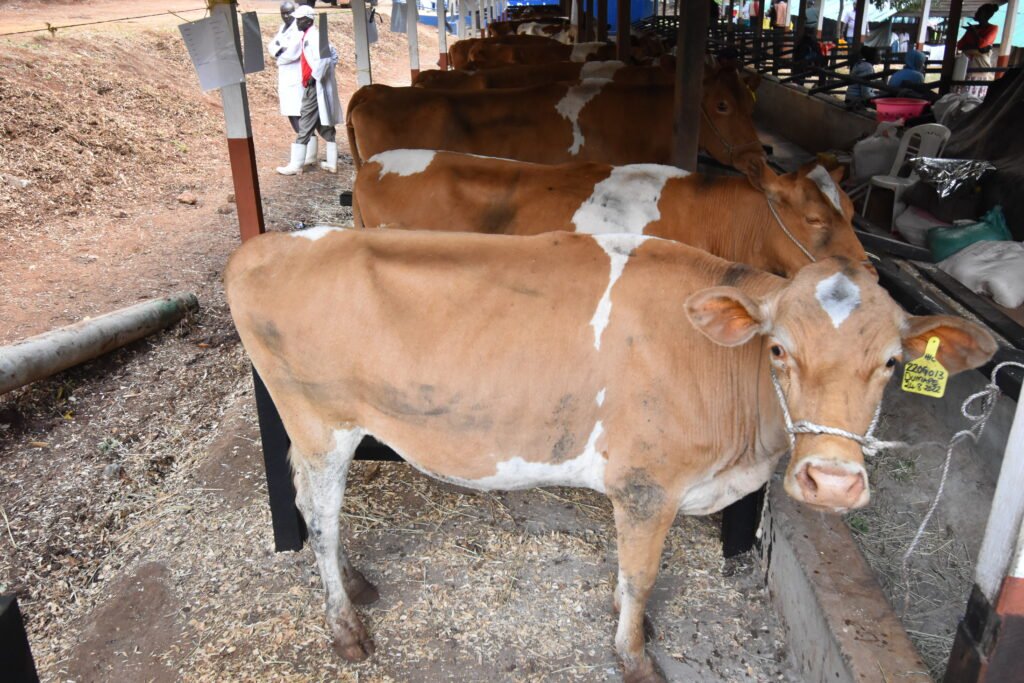By Zablon Oyugi
Lack of tools well suited for assessing the implementation of climate change adaptation measures and progress in livestock systems is impeding efforts by countries to fulfill their reporting obligations under the Paris Agreement.
According to a report by the Consortium of International Agricultural Research Centres (CGIAR), about 36 percent of countries globally had included livestock adaptation measures in new and updated Nationally Determined Contributions (NDCs) between 2020 and 2022.
Developing practical methodologies for tracking adaptation is therefore crucial for understanding the effectiveness of adaptation efforts in livestock systems. Dr. Lucy Njuguna, a post-doctoral fellow at the Alliance of BioversityCIAT who is championing this effort in East Africa, has developed a web-based tool to enable Uganda, Ethiopia and Kenyan governments track and self-report on climate adaptation progress in their respective livestock sectors. The tool dubbed Tracking Adaptation in Livestock Systems (TAiLS) is a product of extensive research conducted in livestock systems in the three East African nations since 2019.
“TAiLS encompasses three essential dimensions crucial for tracking adaptation: climatic hazards, impacts of climate change, and adaptive capacity and actions,” said Dr Njuguna. “By using the tool, the governments can assess shifts in these dimensions along with their corresponding indicators, enabling the formulation of statements regarding progress in climate change adaptation.”
How the tool works
Using 96 indicators associated with these dimensions, the system captures alterations and fluctuations over time and across regions. Accredited users submit data, which undergoes validation, cleaning, processing, and visualisation, offering insights into progress and variations at both national and international levels.
“The tool will be domiciled at the ministries of agriculture of the respective countries having an administrator in charge.
The administrator will then allow other officials at relevant administrative units at national and sub-national levels of government, let’s say, county agriculture executives as in the Kenyan case to key in their data for reporting and analysis,” said Dr Njuguna.
The data will vary from country to country since each has its own adaptation plans and policies at varied execution rates. However, integrating priorities of farmers during the execution of these plans and policies is important in determining the effectiveness of the adaptation measures. The information is then used in setting adaptation priorities, budget, and policies by the governments. The interfaces within the tool also enable devolved units or sub-national levels to access and compare with other regions to note areas that need improvements.
“The sub-national levels can also use the information to additionally advocate increased support in adaptation based on the identified gaps. In this, they help the national governments meet their international adaptation reporting obligations for purposes of planning and decision making,” said Dr Njuguna. By monitoring and reporting on adaptation, countries can garner additional support for adaptation by demonstrating their accomplishments or shortcomings with the available resources.
This, in turn, bolsters the commitment to sustain efforts in supporting adaptation, she added. NDCs are submitted every five years to the United Nations Framework Convention on Climate Change (UNFCCC) secretariat. Following a global review of progress, countries are expected to adjust their commitments in the subsequent NDC with a view to enhancing its level of ambition.
Training the users Though the TAiLS tool is not yet officially launched for use, trials have been conducted on its workability and it continues to receive acceptance following positive feedback from the target users.
Dr Njuguna has had many discussions with the government officials in a bid to influence policies around climate change adaptation in the livestock sector. TAiLS has been showcased at national and global discussion forums as well. Last year, for instance, she participated in the 58th session of the Subsidiary Body for Scientific and Technological Advice (SBSTA) from the 5-15 of June where she highlighted the cutting-edge tool.
“Showcasing the tool and sharing insights from its development presented an opportunity to disseminate knowledge about advancements in practical methods for monitoring adaptation. This ensures that negotiations are enriched by the diverse experiences of stakeholders in various contexts.” This constituted a broader strategy to involve funders, partners, and government officials at both national and sub-national levels, underscoring the importance of monitoring adaptation for the attainment of Nationally Determined Contribution (NDC) targets.
Adaptation, she said, must be grounded in and informed by the most reliable scientific findings and, when relevant, traditional knowledge, insights from indigenous peoples, and local knowledge systems. This can be aimed at seamlessly incorporating adaptation into socioeconomic and environmental policies and initiatives, according to the 6th Assessment Report of the Intergovernmental Panel on Climate Change (IPCC) by the United Nations Educational, Scientific and Cultural Organization (UNESCO).
Support
According to the scientist, the development of the TAiLS tool has received financial support from the German Agency for International Cooperation (GIZ) through Programme for climatesmart livestock systems (PCSL) commissioned by German Federal Ministry for Economic Cooperation and Development (BMZ). Its further refinement and application is being financed under the Livestock and Climate Initiative which is supported by contributions from the CGIAR Trust Fund.

